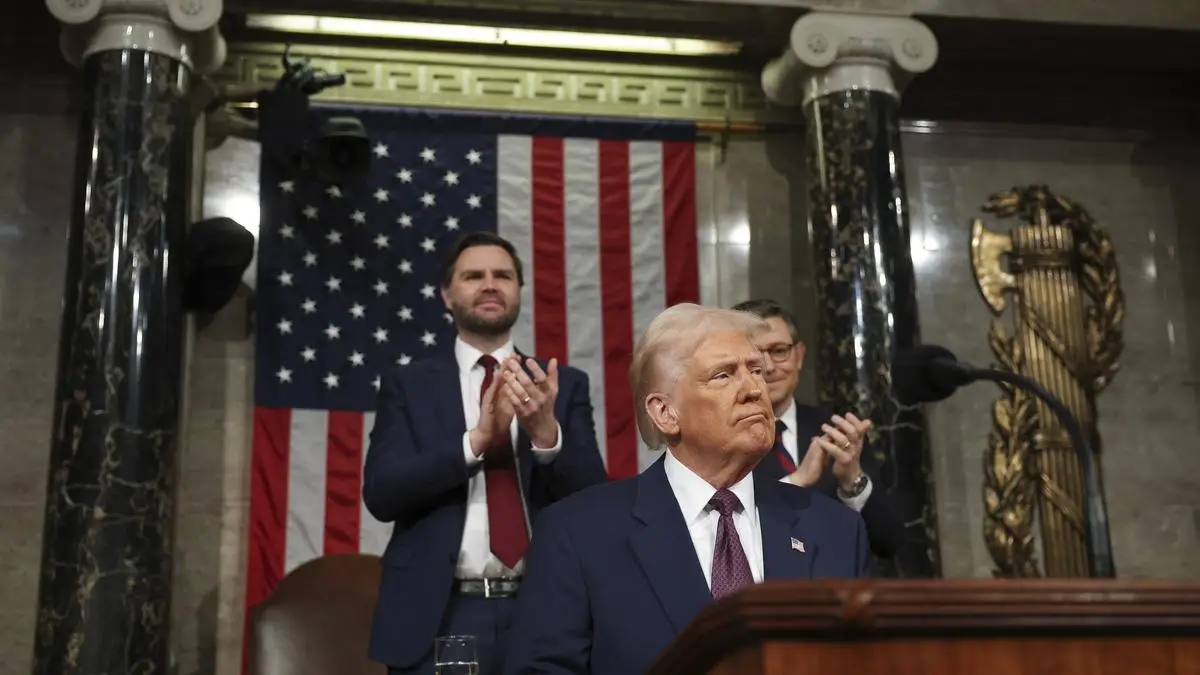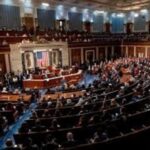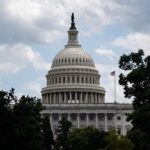U.S. President Donald Trump on Tuesday reiterated his criticism of India’s high tariffs, suggesting that trade negotiations may not bring significant concessions for New Delhi. He specifically highlighted the auto sector, claiming India imposes tariffs exceeding 100%.
“India charges us 100 per cent tariffs; the system is not fair to the US, it never was. On April 2, reciprocal tariffs kick in. Whatever they tax us, we will tax them. If they use non-monetary tariffs to keep us out of their market, then we will use non-monetary barriers to keep them out of our market,” Trump stated while addressing a Joint Session of Congress.
The remarks come just weeks after Prime Minister Narendra Modi’s visit to the U.S., which had raised hopes among Indian businesses for a trade deal that could offer relief from sweeping tariffs. In anticipation, India had proactively reduced tariffs on several items, including bourbon whiskey, before formal negotiations began.
Efforts to mitigate the impact of reciprocal tariffs are ongoing. Commerce Minister Piyush Goyal arrived in the U.S. on Monday for meetings with newly appointed U.S. Trade Representative Jamieson Greer, who has been tasked with implementing Trump’s tariff policy. Greer, who previously served in Trump’s first administration, played a key role in trade actions against China, which indirectly benefited India’s exports in sectors like electronics.
During his address, Trump also criticized longstanding tariff imbalances, stating that countries such as the European Union, China, Brazil, and India impose much higher tariffs on the U.S. than vice versa. “Other countries have imposed tariffs on the U.S. for many years, and now it is time for the U.S. to use tariffs against those countries,” he said, calling the situation “unfair.”
Moody’s recently highlighted the potential impact of U.S. tariffs on developing nations like India, Vietnam, and Thailand, noting their wide rate differentials with the U.S. “India has a lower overall exposure relative to most others in the region, although certain sectors such as food and textiles, as well as pharmaceutical products, face risks. Most companies in our rated portfolio are domestically focused, with limited exposure to the US market,” Moody’s report stated.
The agency also warned that currencies in targeted Asia-Pacific economies could face downward pressure due to potential capital outflows and a strengthening U.S. dollar. However, it noted that most regional economies have robust macroprudential measures and sound monetary policies to cushion external shocks.
Trump’s tariff measures coincide with the new U.S. 2025 trade policy, which challenges several World Trade Organization (WTO) principles. The document asserts that the WTO has “lost its way” and requires reform, criticizing the trade benefits sought by developing nations like India under the WTO’s special and differential treatment (SDT) provisions.
“SDT status provides several benefits, including generous transition periods, higher tariff bindings, and the ability to use prohibited subsidies. Under the current system, countries can obtain SDT benefits by merely self-declaring as ‘developing’—regardless of their per capita gross national income or their income classification according to the World Bank,” the U.S. trade policy document, released on March 3, stated.
The policy also took aim at China’s economic practices, arguing that the WTO failed to address Beijing’s shift away from market-oriented reforms following its 2001 accession. “When China abandoned the market-oriented reform path on which its 2001 accession was premised and embraced state-led, non-market economic practices, the WTO was neither able nor willing to address China’s economic system, which is fundamentally incompatible with the open, market-oriented direction envisioned by WTO members and is contrary to the original principles of the WTO and its agreements,” the document stated.
As the April 2 deadline approaches, India faces increasing trade pressure, with uncertainties looming over future tariff negotiations and WTO-related trade benefits.






